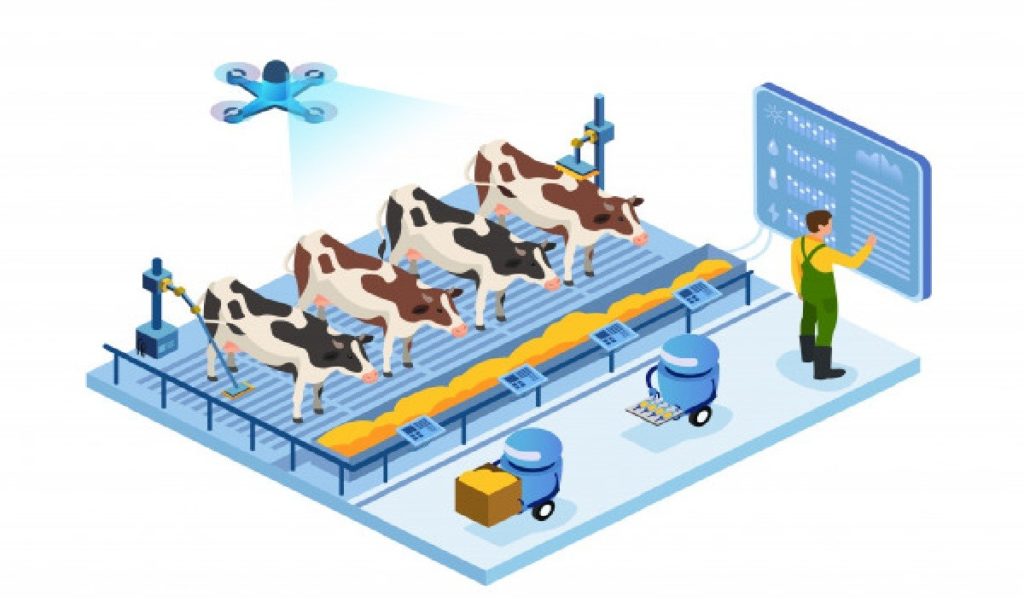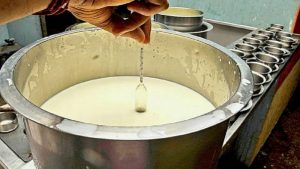
India is the world’s largest producer and consumer of milk. Milk production in the country is expected to continue to report strong growth in the foreseeable future. Milk demand too is expected to rise to 266.5 million tonnes by 2030, according to a study by the National Dairy Development Board (NDDB).
Our per capita milk consumption is well below other major producers, and the cattle yield is also among the lowest. Enhancing yield is one of the key challenges in the Indian dairy sector. In my opinion, it is also a major responsibility so that dairy farmers or milk producers can receive better compensation for their efforts.
This is, however, easier said than done. There are an estimated 96 million dairy farmers in India and the daily production of 440 million liters of milk. Most of these farmers have 3-5 cattle and many of them even fewer. Enhancing milk yields requires improved cattle feed, better cattle health, milk extraction equipment, veterinary facilities, and a host of other factors. Considering the sheer numbers of farmers and bovine cattle, increasing milk yields is a daunting task, to say the least, but the country is on the right track. Efforts are being made to enhance cattle productivity, and the results should start becoming visible in the near future.
Along with improved yields, the major challenge for the Indian dairy farmers is the lack of adequate milk cooling infrastructure. A delay in chilling leads to an estimated three percent or around 5 million tonnes of milk getting spoiled, causing heavy losses to the farmers. Even otherwise, the delay causes a rapid increase in bacterial load, affecting milk’s quality and reducing its potential shelf life.
The currently available solutions are inadequate to achieve the desired quality standards. The absence of a continuous and reliable power supply during chilling is also an issue in many villages. A majority of milk collection centers also do not have cooling infrastructures such as chilling centers, cold chains, or bulk milk coolers.
While these are huge challenges, the other way of looking at them is that they also present a huge opportunity for the dairy sector. Solutions to instantly chill milk at the source are available, and efforts must be made for their higher adoption.
According to projections in the government’s National Action Plan, there is a requirement of 8,80,000 rapid milk chillers in India, and this translates into a $3 billion opportunity.
There is a lot of focus on strengthening the milk cooling infrastructure during the collection and distribution stages by the government and the cooperative or private sector. Still, similar efforts are needed at the farmer’s doorstep to reduce milk wastage if not completely prevent it.
The value added to milk products in India is also significantly lower than other major producers, and this is also a challenge and an opportunity. According to the government’s estimates, there is a potential to add more than 115 million tonnes of additional processing in the value-added dairy products segment in the next five years. This, too, has the potential to attract thousands of crores of rupees in investment and must be tapped.
Talking about digitalization, it is already playing a vital role in the dairy sector and is expected to become a critical aspect in the near future. From farm management, which includes using technology to monitor cattle health and productivity, to milk procurement, comprising automatic milk collection systems and bulk milk collection systems, digitalization is everywhere.
Digitalization also has applications in milk testing for evaluating the quality, screening adulteration, and ushered in greater transparency and traceability throughout the dairy supply chain. The opportunities for digitalization are immense, and even more so because of the greater adoption of emerging technologies such as Artificial Intelligence (AI), Internet of Things (IoT), and Cloud.
As a leading dairy technology company, working at the ground level for nearly three decades, the resilience of Indian dairy farmers still amazes us. If India can transform itself from a milk deficient country into the world’s largest milk producer in a matter of a few decades despite all the challenges, we can imagine where our dairy sector can be in the next 10 years if we empower our dairy farmers with the necessary tools and infrastructure, and extend them the support they need. In such a scenario, the sky is the limit for the Indian dairy sector.
Shridhar Mehta
Director, Prompt Equipments Pvt. Ltd.

















